Key takeaways:
- Selective mutism is an anxiety disorder in children, distinct from shyness, requiring compassionate and tailored approaches for communication.
- Social engagement is vital for building confidence, with peer interactions and playdates serving as effective means to promote communication.
- Strategies such as storytelling, visual aids, and role-playing can significantly improve communication skills and empower children overcoming selective mutism.
- Maintaining progress involves setting small goals, building a supportive network, and journaling experiences to reflect on growth and successes.
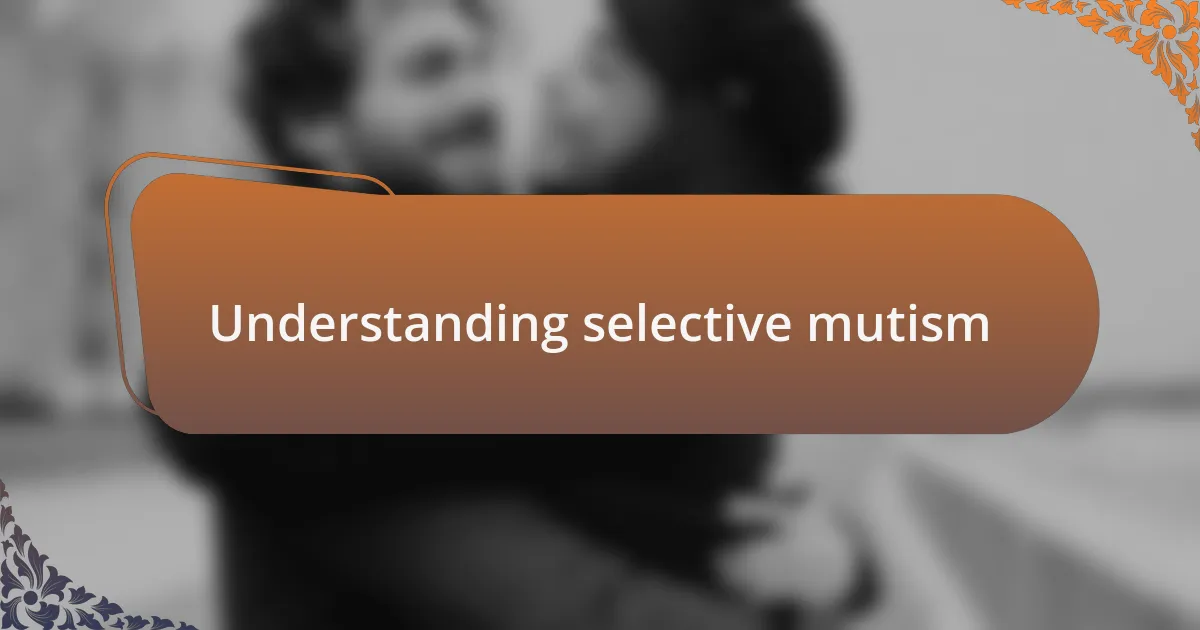
Understanding selective mutism
Selective mutism is a complex anxiety disorder primarily affecting children, characterized by an inability to speak in specific social situations. I remember a time when I first came across a child who, despite being talkative at home, would completely freeze in a school setting. It was baffling and a bit heart-wrenching to see how anxiety could create such a divide between their world at home and the outside world.
Emotional insights reveal how crucial the environment is for children with selective mutism. I once asked a parent how they felt watching their child struggle, and they shared that it often felt like their child was trapped behind a glass wall, yearning to connect but unable to break through. This paints a vivid picture of the internal battles these children face daily, doesn’t it?
Additionally, understanding that selective mutism is not simply shyness but an extreme form of social anxiety can help reshape our perceptions. Consider this: if a child could speak freely to their pet but not a teacher, what does that say about the power of comfort in communication? This distinction emphasizes the need for compassionate approaches tailored to each child’s unique experiences.
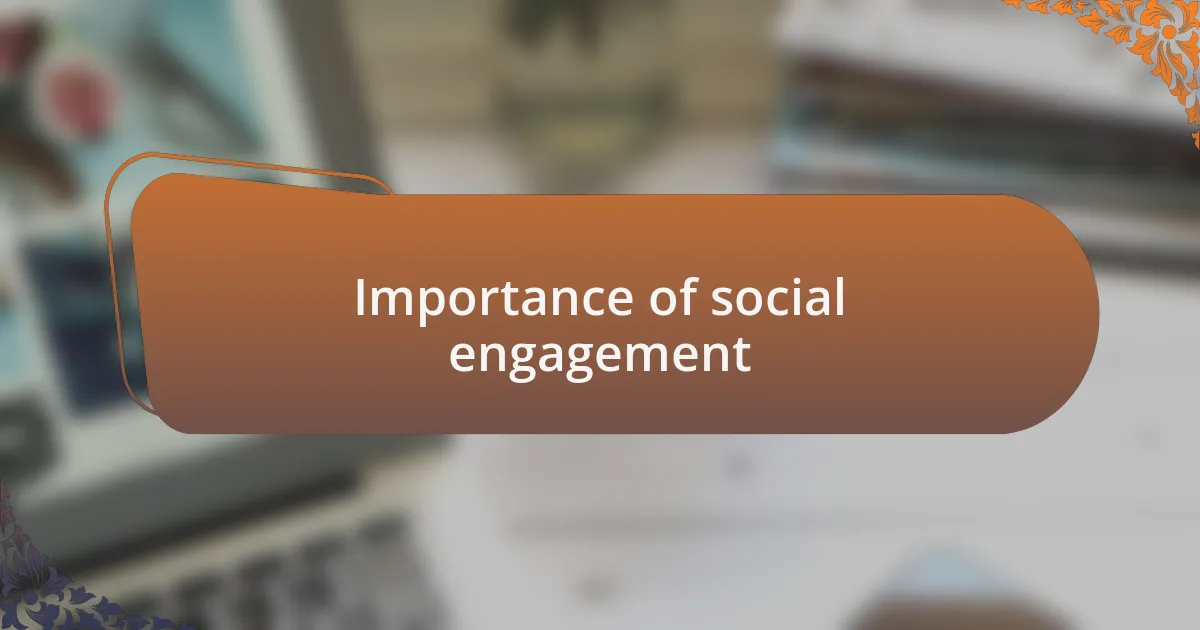
Importance of social engagement
Social engagement is essential for children with selective mutism as it serves as a bridge to both confidence and communication. I remember watching a workshop where children practiced social play; seeing their faces light up when they successfully engaged with peers was incredibly moving. Those moments reinforced how interactions can gradually build their comfort levels in different environments.
When we think about a child’s development, social interaction goes beyond small talk; it’s about forming bonds that foster emotional well-being. One parent I spoke with described how weekly playdates transformed their child’s ability to express themselves. It raises an important question: how can we create more environments that encourage these connections? By doing so, we pave the way for children to find their voices, even if it takes time.
Moreover, the emotional rewards of social engagement cannot be underestimated. A child once shared with me that having a trusted friend nearby made school less daunting, suggesting that peer support might be a key ingredient in their journey. This makes me wonder: how often do we overlook the power of friendship in helping these children feel secure? It’s a reminder that social engagement isn’t just beneficial; it’s fundamental to their growth and healing.
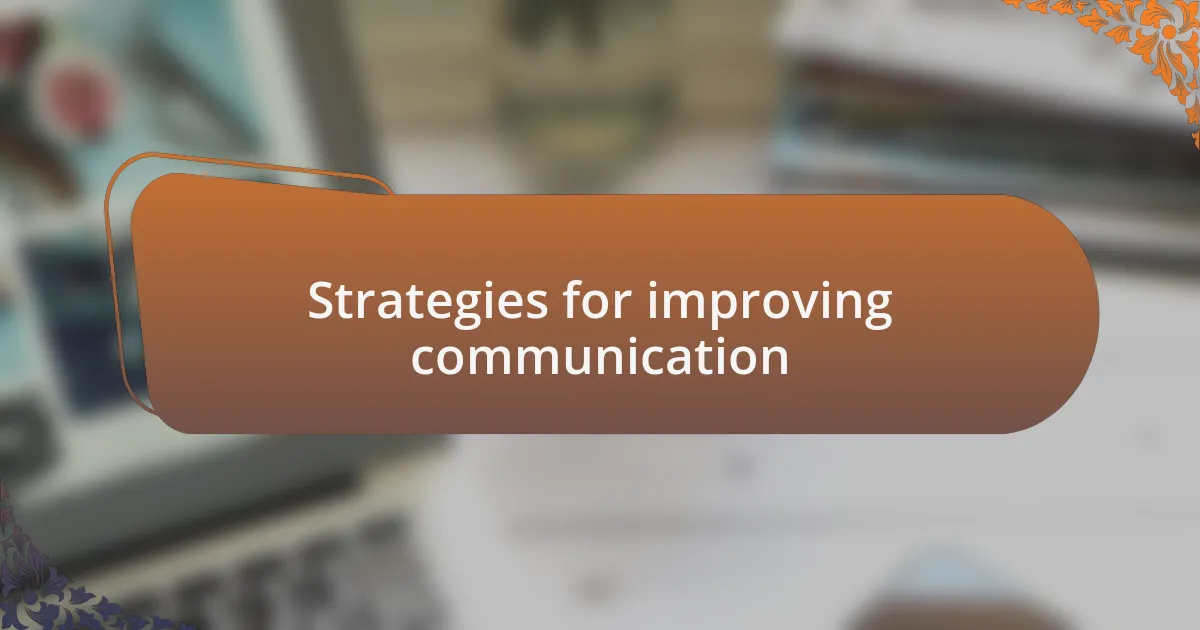
Strategies for improving communication
When considering strategies for improving communication, it’s vital to create structured environments that encourage expression. I once facilitated a small group session where we used storytelling as a medium; the kids felt safe sharing their stories. Not only did their excitement grow, but I consistently observed how their confidence in speaking blossomed with each session.
Another effective approach is to utilize visual aids to support verbal communication. I’ve seen children respond positively to simple picture cards depicting emotions and actions. These aids not only simplify complex ideas but also allow children to express themselves without the overwhelming pressure of words. How often do we overlook the power of visual learning in our interactions with these children?
Practicing role-playing scenarios can also be an invaluable strategy. I vividly remember a child who overcame their aversion to speaking by acting out different social situations, such as ordering food or meeting new friends. This practice not only made the situations familiar but also positioned kids as confident actors in their own stories. Isn’t it fascinating how such playful interactions can transform anxiety into empowerment?
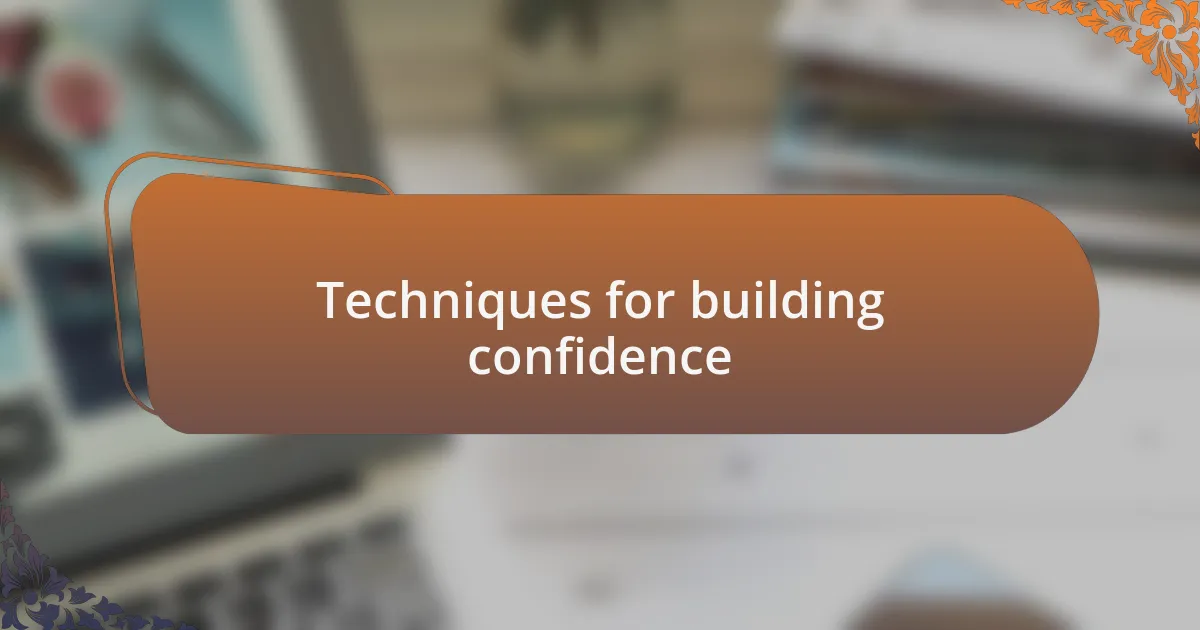
Techniques for building confidence
One powerful technique for building confidence is through gradual exposure to social situations. I recall a time when I guided a child to initiate conversations with peers over simple topics like favorite games. It was rewarding to witness their gradual comfort level rise; each small success paved the way for more significant interactions. Have you noticed how even a tiny win can elevate someone’s self-esteem?
Another effective method involves the use of positive reinforcement. I remember celebrating a child’s small victories, like making eye contact or speaking a full sentence during group activities. The joy on their face after receiving praise was undeniable. Isn’t it interesting how recognition can amplify a timid child’s belief in their abilities and spur them on toward more challenges?
Engaging in activities that resonate with a child’s interests can also significantly boost confidence. For instance, I once worked with a young artist who felt shy about sharing their creations. When we organized a small exhibition, their pride in showcasing their work transformed their anxiety into enthusiasm. How empowering is it to see someone shine when given the right platform?
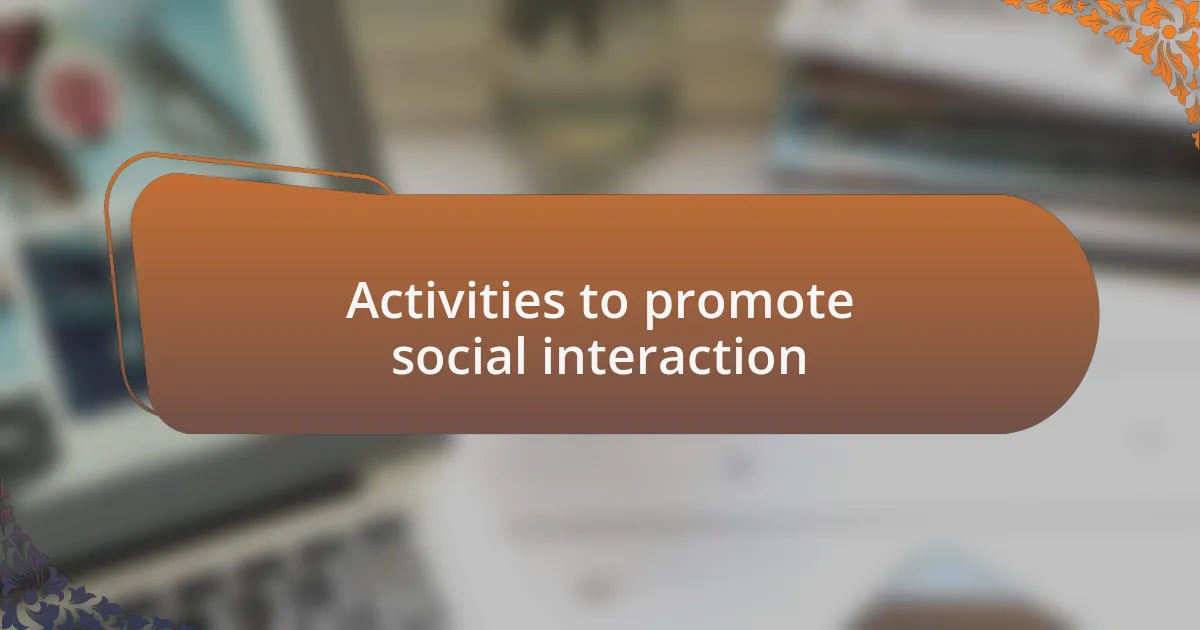
Activities to promote social interaction
Engaging in group activities designed around common interests can work wonders for social interaction. I once facilitated a small book club, aiming to foster discussions around favorite stories. It amazed me how shared enthusiasm over characters and plots ignited conversations, creating bonds among the children. Have you ever seen how a mutual passion can open doors to friendships?
In my experience, play-based activities can break down barriers to communication. For example, I organized a game where participants had to work in pairs to solve a puzzle, forcing them to communicate and cooperate. The laughter and teamwork that emerged were striking; it transformed what could have been awkward silence into a lively atmosphere. Isn’t it fascinating how play can be such a natural catalyst for connection?
Art projects also provide a wonderful avenue for self-expression and group interaction. I recall hosting a mural painting event where each child contributed their ideas and talents to a larger piece. Watching them collaborate, share brushes, and exchange ideas was heartwarming. How beautiful is it when creativity becomes a bridge, allowing children to express themselves without the pressure of verbal communication?
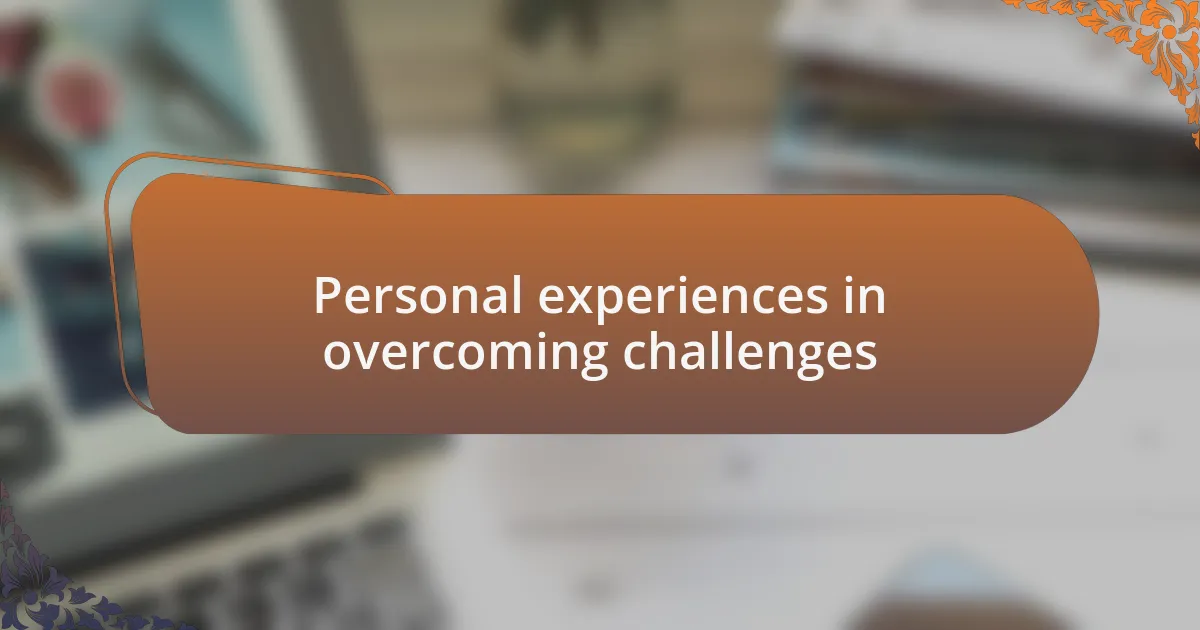
Personal experiences in overcoming challenges
Overcoming challenges in social engagement has been a journey shaped by vulnerability and connection. I remember a time when I attended a community event that felt overwhelming. Amidst the noise and crowd, I spotted someone sitting alone, and I felt a nudge to reach out. Initiating that conversation was daunting, but it turned out to be a pivotal moment of connection — a reminder that sometimes, taking that first step can bridge a gap that feels insurmountable.
In another instance, I faced difficulties when trying to communicate my ideas in a group setting. I felt like my voice was lost among louder personalities. Instead of retreating, I decided to use visual aids to express my thoughts more clearly. It was incredible to see how presenting a simple chart made my points resonate with others. Have you ever found that what helps you communicate can also empower those around you to listen?
I also recall grappling with feelings of doubt when attending social gatherings. The pressure to engage often felt stifling. Yet, I began using a personal breathing technique before joining any group, which helped calm my nerves. It transformed my experience; rather than dreading interactions, I found myself more present and able to connect. Isn’t it powerful how a small personal strategy can shift your entire perspective on social situations?

Tips for maintaining progress
To maintain progress in social engagement, consistency is key. I remember setting small goals for myself, like saying “hello” to one new person each week. This gradual approach made the process less daunting and allowed me to celebrate each small victory, reinforcing my confidence. Have you tried breaking down your goals into manageable steps?
Another effective tip is to establish a support network. I found that surrounding myself with understanding friends made a significant difference. They encouraged me to engage, offering support when my anxiety crept in. Have you considered sharing your journey with someone who can help hold you accountable?
Finally, keep a journal of your experiences. I began documenting my thoughts and feelings after social interactions, which helped me reflect on my progress. Not only did it allow me to recognize patterns in my behavior, but it also highlighted the small successes I might have otherwise overlooked. Have you given journaling a try to track your own growth?